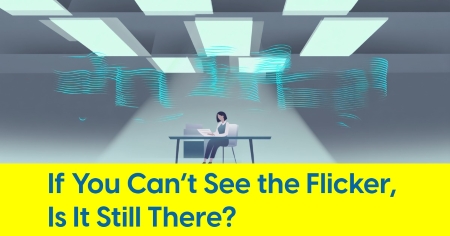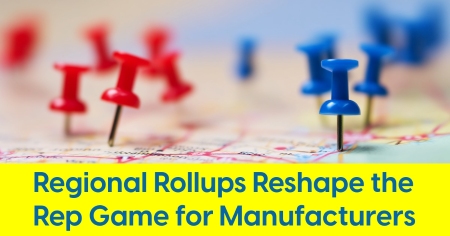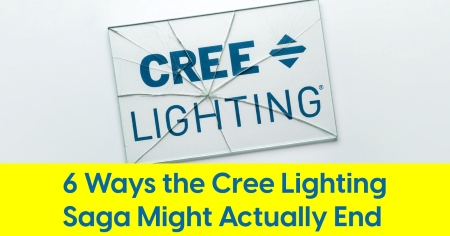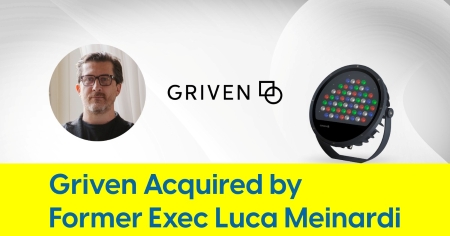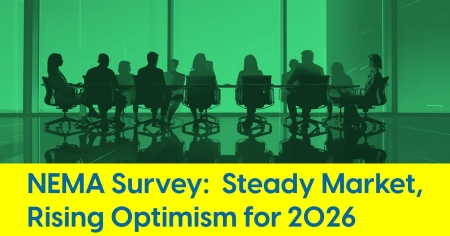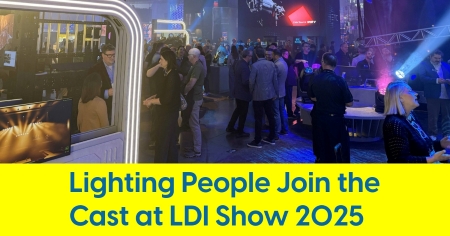March 15, 2025
5 Things to Know: March 15

The AIA fosters collaboration – for the most part. Plus, Cooper Lighting gets roped into the Mlazgar-Current squabble.
Here's a roundup of some of the week's happenings curated to help lighting people stay informed.
1. AIA Summit Spotlights Collaboration — But Where’s Lighting?
The American Institute of Architects (AIA) hosted its first-ever AEC Summit on February 26, at the National Building Museum in Washington, D.C., bringing together over 20 leading organizations from architecture, engineering, and construction to discuss interdisciplinary collaboration. Attendees explored shared challenges in sustainability, inclusivity, and industry-wide innovation, with participation from groups such as the Exterior Insulation and Finish System (EIFS) Association the International Association of Plumbing and Mechanical Officials (IAPMO), and the American Society of Landscape Architects (ASLA). The event sought to break down silos between disciplines, fostering stronger connections across the built environment.
Notably absent from the conversation, however, was any organization representing the lighting design profession. Given lighting’s critical role in shaping the built environment — contributing to energy efficiency, occupant well-being, and architectural aesthetics — it raises the question of why lighting professionals were not included in this industry-wide discussion. While structural engineers, landscape architects, and HVAC specialists were at the table, lighting designers, who work at the intersection of architecture and human experience, were not.
As AIA looks to build on this inaugural event, it seems logical to consider whether a dedicated lighting design voice should be included in future summits. With so many pressing issues requiring cross-disciplinary solutions, ensuring that all key players — including lighting professionals — have a seat at the table could strengthen the AEC industry’s collaborative efforts. If this event is to continue shaping the future of design and construction, the absence of lighting representation may not go unnoticed.
2 . Mlazgar Seeks to Quash Cooper Lighting Subpoena
The long-running legal battle between Minnesota lighting agent, R.L. Mlazgar Associates, and Current (formerly known as Hubbell Lighting) has entered a new phase of discovery, with Mlazgar moving to quash a subpoena served on Cooper Lighting. Current, which is defending against Mlazgar’s lawsuit over numerous grievances including unpaid commissions, has sought documents from Cooper, arguing they are relevant to its counterclaim that Mlazgar wrongfully breached their contract by taking on Cooper as a partner. Mlazgar contends that the subpoena is a baseless “fishing expedition” and an attempt to harass both the agency and Cooper, a nonparty to the case.
The lawsuit, originally filed in 2022, stems from Mlazgar’s decision to align with Cooper Lighting while still under contract with Current. Current terminated the partnership and has since accused Mlazgar of breaching its agreement. In response, Mlazgar claims it was unjustly terminated by Current (despite taking on Cooper Lighting) and is owed significant back commissions. The dispute has intensified as Current has sought broader discovery, demanding communications between Mlazgar and Cooper regarding their business dealings and any financial incentives Cooper may have provided to Mlazgar.
In its motion, Mlazgar argues that the subpoena should be quashed on multiple grounds, including lack of proper notice and the availability of the requested documents from Mlazgar itself. The agency further asserts that forcing Cooper to disclose its agreements with Mlazgar could give Current an unfair competitive advantage, likening it to compelling Pepsi to turn over its sales contracts to Coca-Cola. As the court weighs Mlazgar’s request for a protective order, the legal battle between the former partners shows no sign of slowing down.
3. Oklahoma’s DOGE Initiative Cites LED Rebate Win
In an effort to trim government spending, Oklahoma has launched its own version of the federal Department of Government Efficiency (DOGE), a cost-cutting initiative championed by Elon Musk under President Donald Trump. The Oklahoma Division of Government Efficiency (DOGE-OK) seeks to eliminate wasteful spending and position the state as a business-friendly leader. Unlike its federal counterpart, which has drawn scrutiny for its vague structure and billionaire influence, DOGE-OK operates on a state level with a volunteer business leader serving as "Chief DOGE Advisor."
One of DOGE-OK’s early claimed victories includes an energy-saving initiative that secured a $42,000 rebate for an LED lighting retrofit at the Oklahoma Department of Transportation. The rebate, part of a growing effort by the Office of Management and Enterprise Services (OMES) to modernize state facilities, highlights the initiative’s potential to reduce costs through targeted efficiency measures.
While critics argue that such programs offer symbolic wins rather than addressing deeper budgetary concerns, supporters view them as a step toward leaner governance. DOGE-OK is required to submit a comprehensive efficiency report by March 31, 2025, outlining its impact and recommendations for reforming state-federal fiscal relations.
4. Dynamic LED Dresses Unveiled at Paris Fashion Week
Kunihiko Morinaga, the visionary behind Japanese label Anrealage, pushed the boundaries of fashion technology at Paris Fashion Week 2025 with his latest “SCREEN” collection. Models walked the runway in garments laced with 10,000 full-color LED lights, their patterns shifting in real-time like a living canvas.
The dresses, developed in collaboration with Japanese tech firm MPLUSPLUS, responded to movement and remote commands, displaying fluid animations that transformed from kaleidoscopic waves to pixelated static. In the show’s finale, the garments flickered into stained-glass patterns, a nod to the American Cathedral where the presentation took place.
Morinaga, known for his shape-shifting designs, described the collection as a step toward redefining how clothing interacts with its surroundings. Previous works saw garments that changed with UV light or inflated mid-runway, but this was the first large-scale showcase of LED-integrated textiles.
We reached out to the designers about the availability of DALI-compatible evening wear, but they did not reply before press time.
5. NEMA Introduces New Logo, Website, and Tagline
The National Electrical Manufacturers Association (NEMA) has refreshed its brand with a new logo and tagline, “We make it electric.” The association has also launched a redesigned website at makeitelectric.org, while its original site (nema.org) remains active at the moment.

NEMA represents a significant portion of the U.S. electroindustry including lighting and electrical industry manufacturers. The update comes as part of the organization’s ongoing efforts to clarify its identity and support its role in modernizing power systems and infrastructure nationwide.


